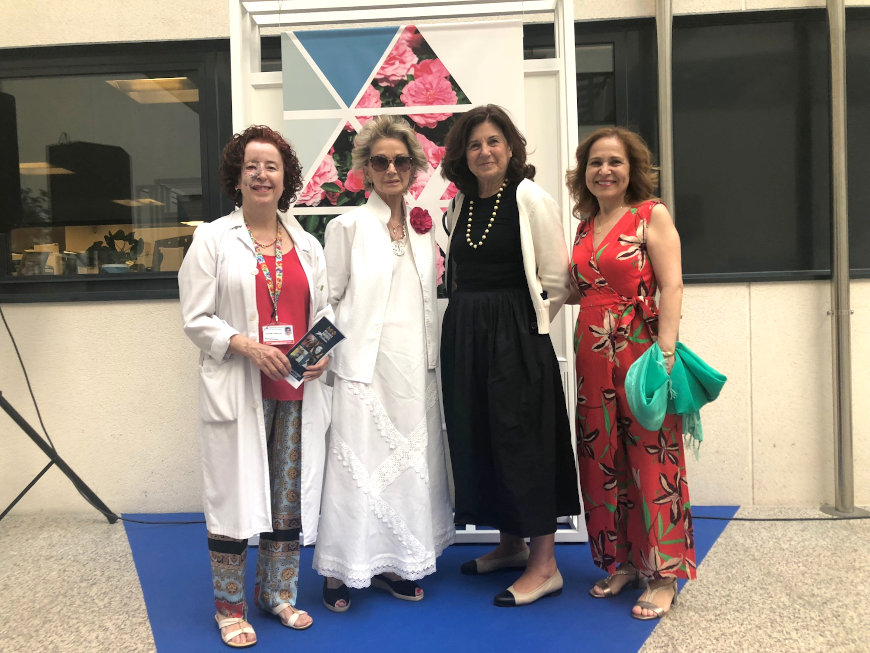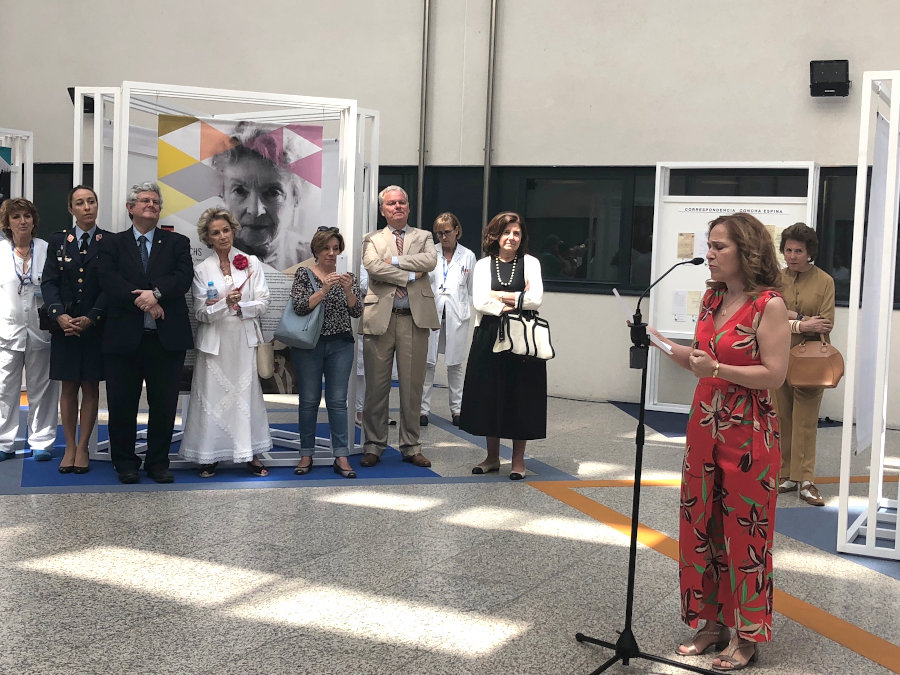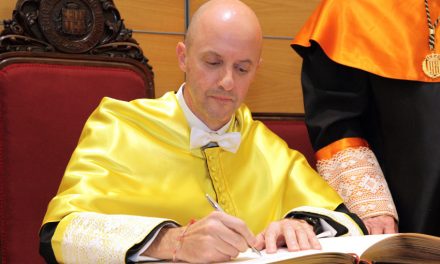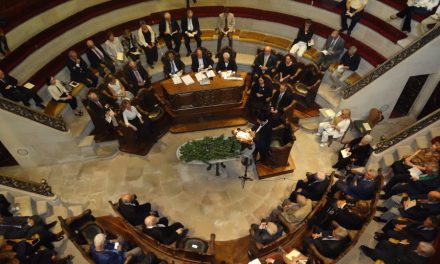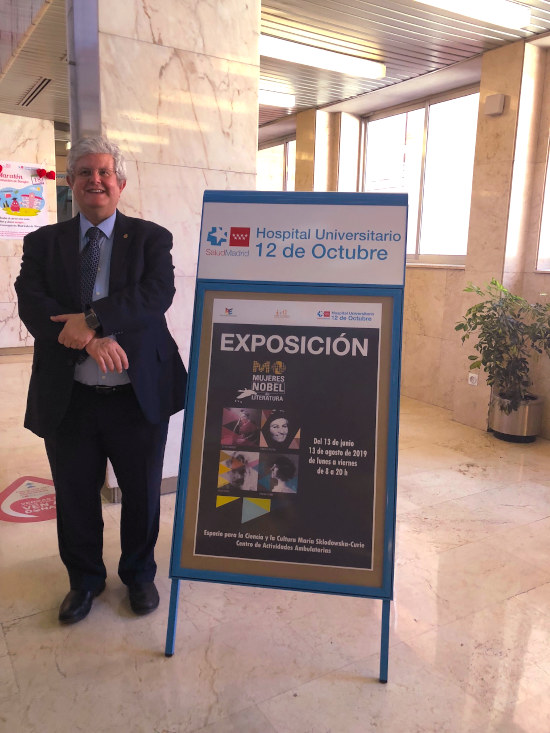
José Ramón Calvo, full academician and president of the Institute of International Cooperation of the Royal European Academy of Doctors-Barcelona 1914 (RAED), represented the institution at the opening of the exhibition “Mujeres galardonadas con el Nobel de Literatura” (Women awarded with the Nobel prize in Literature), which held on June 13 in the Scientific Culture Unit of the Hospital 12 October in Madrid and also served as a tribute to the renowned Spanish writer Concha Espina, several times a candidate for the Nobel prize. Thanks to the intermediation of the academician, the Royal Academy and this hospital reference center have agreed to sign a collaboration agreement for science and culture issues. Hospital 12 October, in fact, is the first health center in Spain that created a specific unit to bring culture to patients and workers from activities scheduled throughout the year. The RAED is committed to providing content to this unit, thus fulfilling its statutory objective of bringing science and knowledge to society.
The exhibition was designed and curated by two regular collaborators of the Royal Academy, Sonia Rivas-Caballero and Belén Yuste. Their purpose is to enhance the literary work of three of the women who have won the Nobel prize in Literature. In particular, the first writer who got it, the Swedish Selma Lagerlof (1909); the first Spanish-American writer, Gabriela Mistral (1945), and the first German Jewish writer who managed to escape the Nazis and became one of the great writers of the 20th century despite her dramatic personal biography, Nelly Sachs (1966).
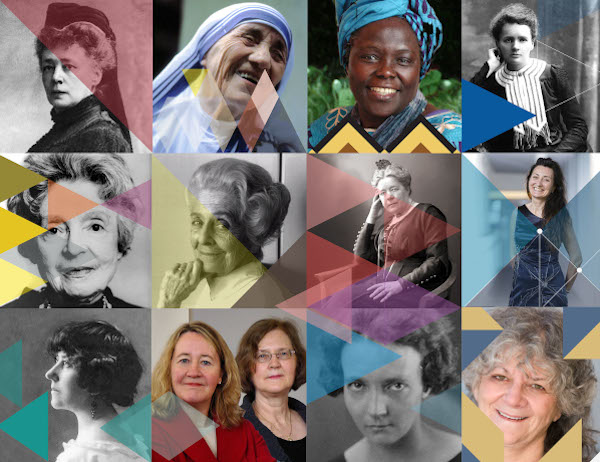 Along with the history and avatars of these three great world literature, the exhibition carries out an extensive and documented reference to the life and work of Concha Espina (1869-1955), the Spanish writer and poet who was closest to receiving recognition of the Swedish Academy, since she was proposed to this award for more than a decade, according to the records of the Nobel Foundation, which can be accessed 50 years after the award has been granted. At least three times she was in the final three candidates to be chosen.
Along with the history and avatars of these three great world literature, the exhibition carries out an extensive and documented reference to the life and work of Concha Espina (1869-1955), the Spanish writer and poet who was closest to receiving recognition of the Swedish Academy, since she was proposed to this award for more than a decade, according to the records of the Nobel Foundation, which can be accessed 50 years after the award has been granted. At least three times she was in the final three candidates to be chosen.
This exceptional writer whose work may not have been sufficiently publicized in Spain and who was internationally recognized as one of the great literats in the Spanish language of the 19th and 20th centuries enjoyed the friendship of Santiago Ramon y Cajal and Jacinto Benavente, who were some of her Nobel proponents, as well as Gabriela Mistral, Gregorio Marañón, Azorín, the count of Romanones, Ramón Gómez de la Serna or Juan Ignacio Luca de Tena. She was an active columnist for the newspapers “ABC” and “La Vanguardia” and until her death she continued to write articles of opinion and poetry, although in her last years she was affected by an almost total blindness.

